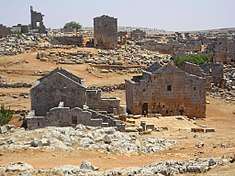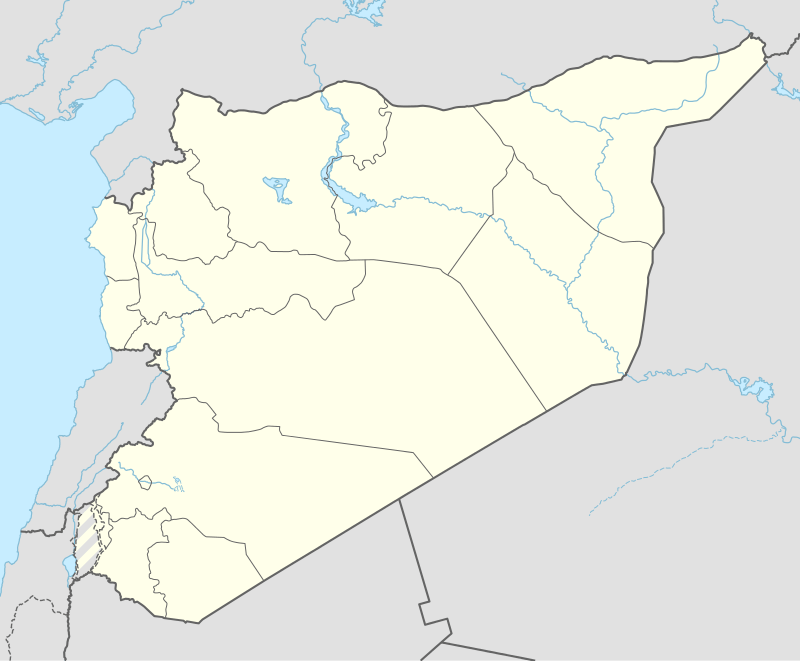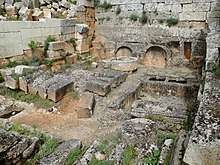Serjilla
Serjilla (Arabic: سيرجيلة) is one of the best preserved of the Dead Cities in northwestern Syria, contains about 700 sites. It is located in the Jebel Riha, approximately 65 km north from Hama and 80 km southwest from Aleppo, very close to ruins of another "dead city" of Bara. The settlement arose in a natural basin and prospered from cultivating of grapes and olives. A bath complex indicates the wealth of the community. Unusually, it was built in 473, already during the time of Christianity. Thomas Joseph Shanan considered Serjilla as "Christian Pompeii".
سيرجيلة | |
 Ruins of Serjilla | |
 Shown within Syria | |
| Location | Idlib Governorate, Syria |
|---|---|
| Coordinates | 35.670°N 36.569°E |
| Type | settlement |
| Part of | Dead Cities |
| History | |
| Founded | ca. 473 AD |
| Abandoned | 7th century AD |
| Cultures | Byzantine |
| Site notes | |
| Excavation dates | 1899—present |
| Condition | ruined |
| Ownership | Public |
| Public access | Yes |
Charles-Jean-Melchior de Vogüé, a French archaeologist, did the first scientific studies in 1860s. In 1899, an archeological team from Princeton University discovered a large mosaic on the main hall floor, but it had disappeared when the team returned six years later. Traces of now destroyed murals were found on the walls as well. Next to the baths stands an andron, a meeting place for men. Further east, there was a small church but not much remains of it. Among ruins of numerous residential houses, a two storey villa which still stands today. In two lower rooms, one can still see an arch which would have supported the ceiling. This feature was typical in the Dead Cities. Behind the villa, there is a sunken building with an olive press. In Serjilla, the limestone-mining was very common and mature, even the empty space left by mining activities were useful, sometimes minings could take place right under the buildings.
Like most other of the Dead Cities, Serjilla was abandoned in the seventh century when the Arabs conquered the region and discontinued merchant routes between Antioch and Apamea.
In 2010, because of the Syrian civil war, UNESCO put Serjilla on the list World Heritage in Danger.
Gallery
 Two storey villa
Two storey villa Public baths
Public baths The Church
The Church The press-house
The press-house
External links
- Simeon Citadel and Dead Cities, Suggestion to have Serjilla recognized as a UNESCO world heritage site, in 2006, as part of "Simeon Citadel and Dead Cities"-project.
- Syria Gate
- MidleEast.com
| Wikimedia Commons has media related to Serjilla. |